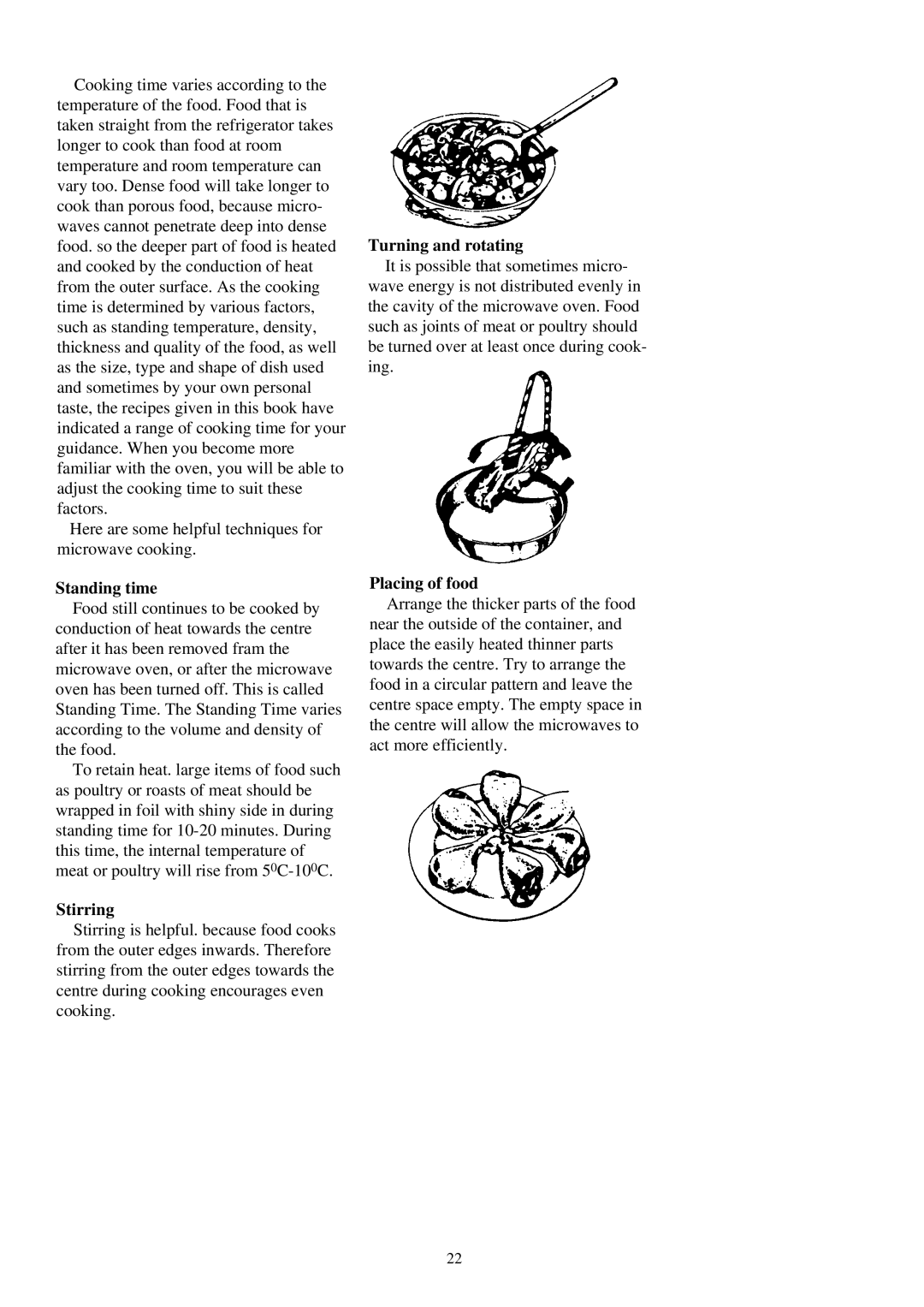
Cooking time varies according to the temperature of the food. Food that is taken straight from the refrigerator takes longer to cook than food at room temperature and room temperature can vary too. Dense food will take longer to cook than porous food, because micro- waves cannot penetrate deep into dense food. so the deeper part of food is heated and cooked by the conduction of heat from the outer surface. As the cooking time is determined by various factors, such as standing temperature, density, thickness and quality of the food, as well as the size, type and shape of dish used and sometimes by your own personal taste, the recipes given in this book have indicated a range of cooking time for your guidance. When you become more familiar with the oven, you will be able to adjust the cooking time to suit these factors.
Here are some helpful techniques for microwave cooking.
Standing time
Food still continues to be cooked by conduction of heat towards the centre after it has been removed fram the microwave oven, or after the microwave oven has been turned off. This is called Standing Time. The Standing Time varies according to the volume and density of the food.
To retain heat. large items of food such as poultry or roasts of meat should be wrapped in foil with shiny side in during standing time for
Stirring
Stirring is helpful. because food cooks from the outer edges inwards. Therefore stirring from the outer edges towards the centre during cooking encourages even cooking.
Turning and rotating
It is possible that sometimes micro- wave energy is not distributed evenly in the cavity of the microwave oven. Food such as joints of meat or poultry should be turned over at least once during cook- ing.
Placing of food
Arrange the thicker parts of the food near the outside of the container, and place the easily heated thinner parts towards the centre. Try to arrange the food in a circular pattern and leave the centre space empty. The empty space in the centre will allow the microwaves to act more efficiently.
22
